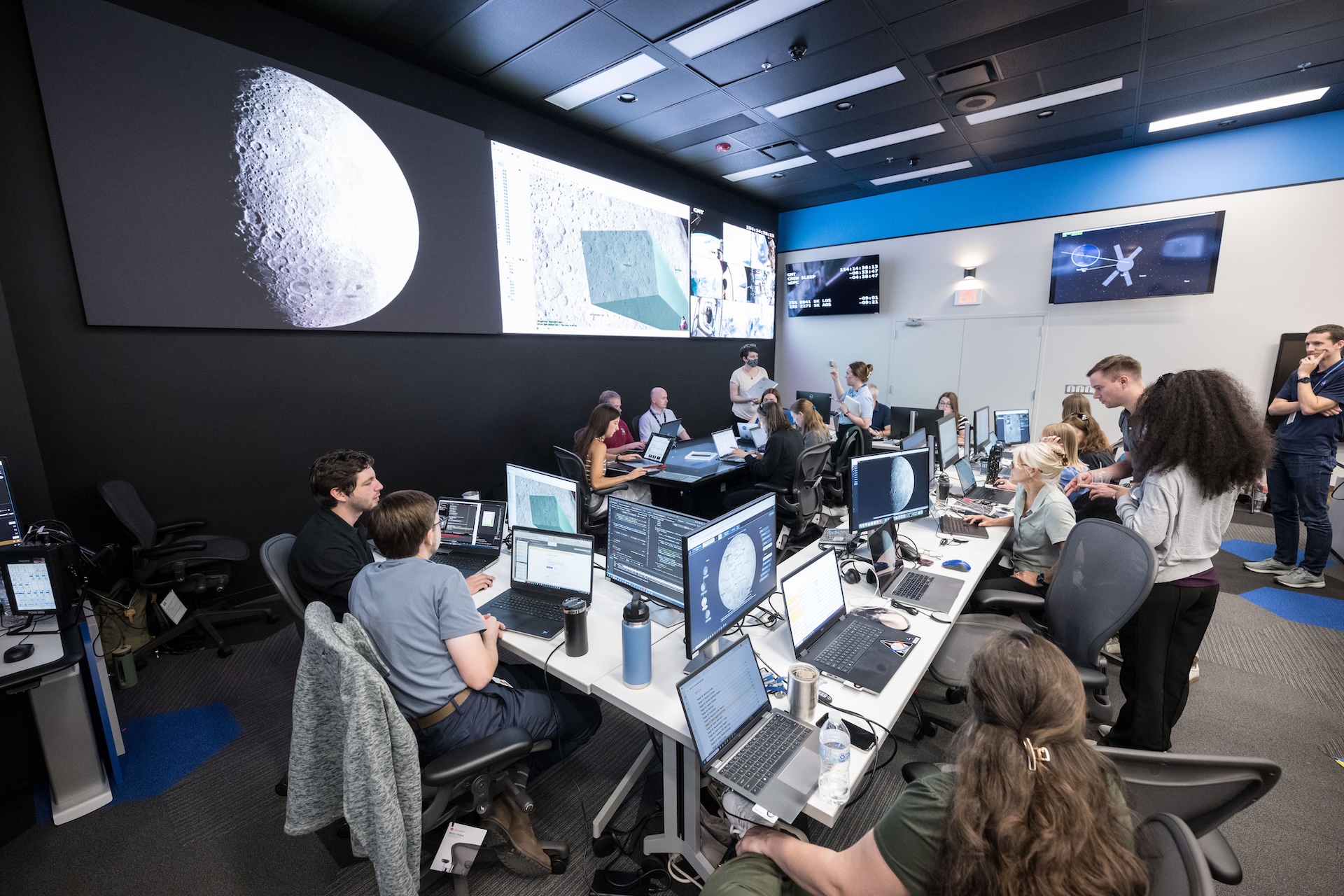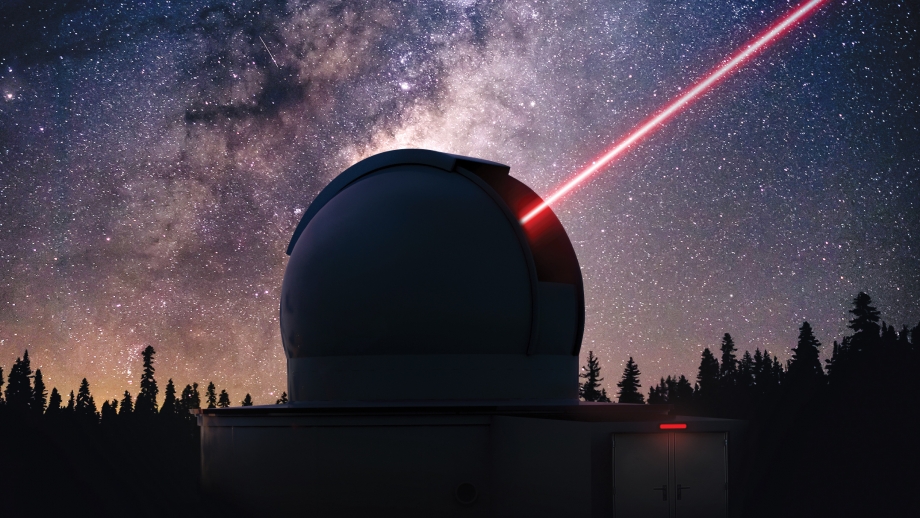7.05.2025
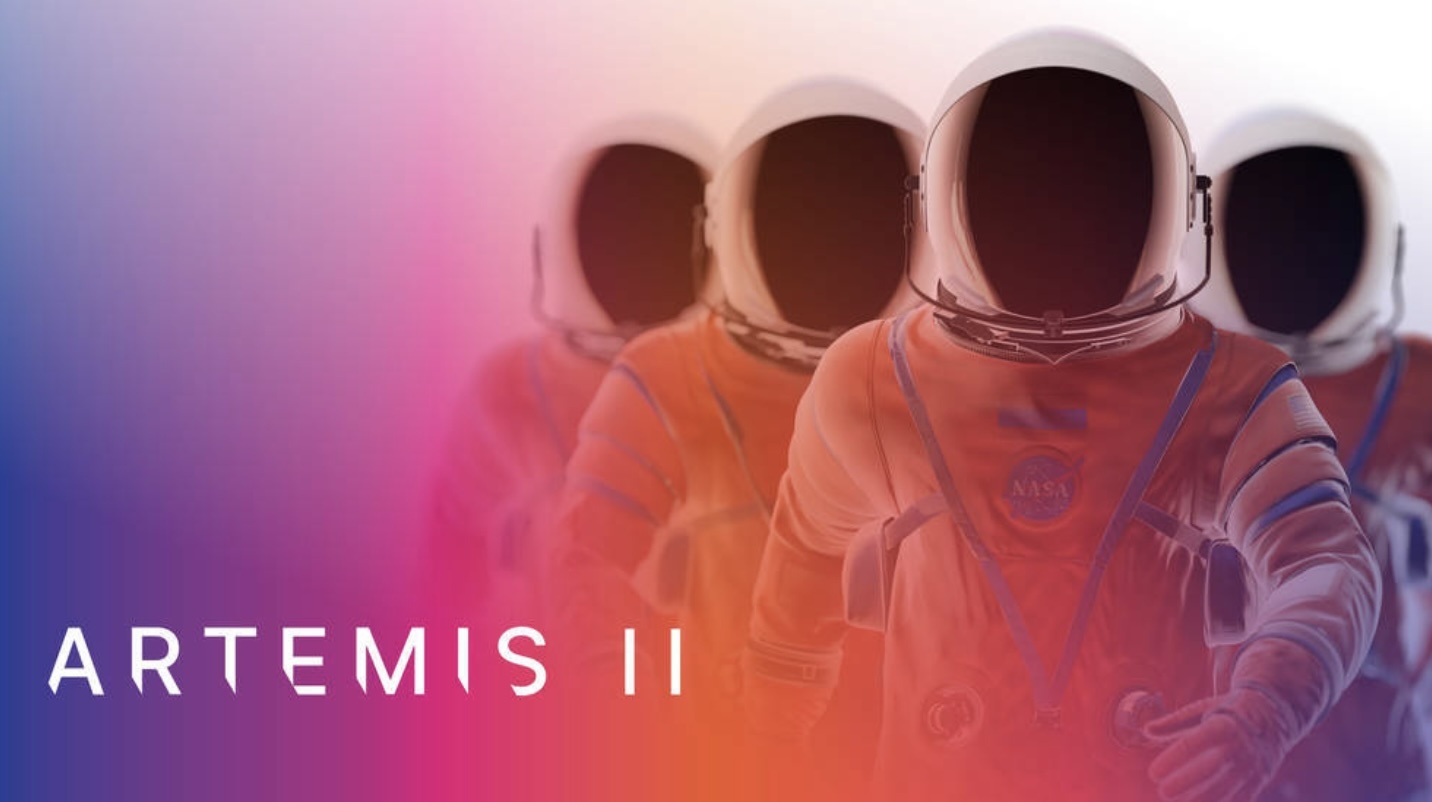
NASA’s Artemis II Orion Spacecraft Ready for Fueling, Processing
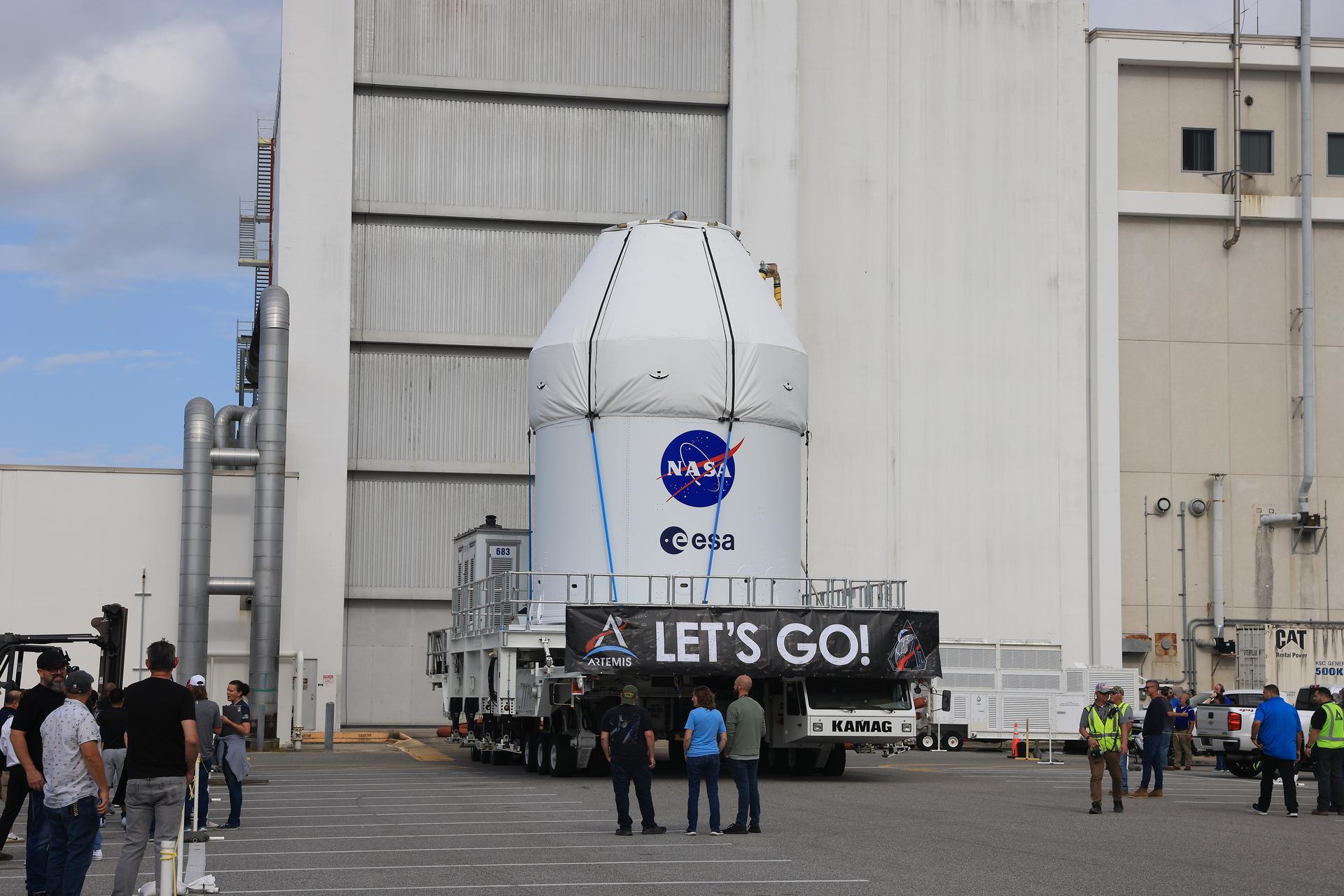
The Orion spacecraft for NASA’s Artemis II crewed mission around the Moon has been on the move. Technicians relocated the spacecraft May 5 from the Neil A. Armstrong Operations and Checkout Facility at the agency’s Kennedy Space Center in Florida, where it was assembled, to its fueling facility at the spaceport.
“With the Artemis II mission on the horizon, seeing the Orion spacecraft depart the Operations and Checkout building for the Kennedy Space Center’s Multi-Payload Processing Facility reflects the many months of hard work, dedication, collaboration, and innovation of the entire team” said Howard Hu, NASA’s Orion program manager. “It demonstrates our ability to achieve ambitious goals to enable a safe and successful Artemis II mission. The Orion team was proud to turn over the first human-rated deep space exploration spacecraft in over 50 years to Exploration Ground Systems for fueling and stacking for our next mission to the Moon.”
Inside the Multi-Payload Processing Facility, engineers and technicians from NASA’s Exploration Ground Systems Program will load Orion’s propellants, high pressure gases, coolant, and other fluids the spacecraft and crew will need to maneuver and carry out their 10-day journey. Because of the hazardous nature of propellant loading, the spacecraft is fueled remotely from the spaceport’s Launch Control Center. After fueling is complete, the Artemis II crew will participate in an equipment interface test, in which they will don their Orion Crew Survival System spacesuits and enter the spacecraft to test all the equipment interfaces they will need to operate during the mission.
Following servicing and final checkouts, the spacecraft will be transported to Kennedy’s Launch Abort System Facility to be integrated with its launch abort system, which is made up of abort, jettison, and attitude control motors and fairings. The system is designed to carry the crew to safety in the event of an emergency during launch or ascent atop the SLS (Space Launch System) rocket. Once completed, the spacecraft will be transported to the Vehicle Assembly Building to be stacked atop SLS.
Orion’s relocation marks completion of a phase of assembly and testing work for Orion and the beginning of key steps toward launch and mission preparations. While in the operations and checkout facility, thousands of components in Orion’s systems were integrated into the spacecraft. The crew module, service module, and crew module adapter were connected, and vacuum and acoustics testing occurred to ensure the spacecraft will be able to endure the harsh environment of space.
The Artemis II test flight will take commander Reid Wiseman, pilot Victor Glover, and mission specialist Christina Koch from NASA, and mission specialist Jeremy Hansen from the CSA (Canadian Space Agency) around the Moon and return them safely back home. The mission is the first crewed flight under NASA’s Artemis campaign and is another step toward missions on the lunar surface and helping the agency prepare for future human missions to Mars.
Quelle: NASA
----
Update: 14.05.2025
.
NASA Goes Live on Twitch: Design Artemis II Moon Mascot
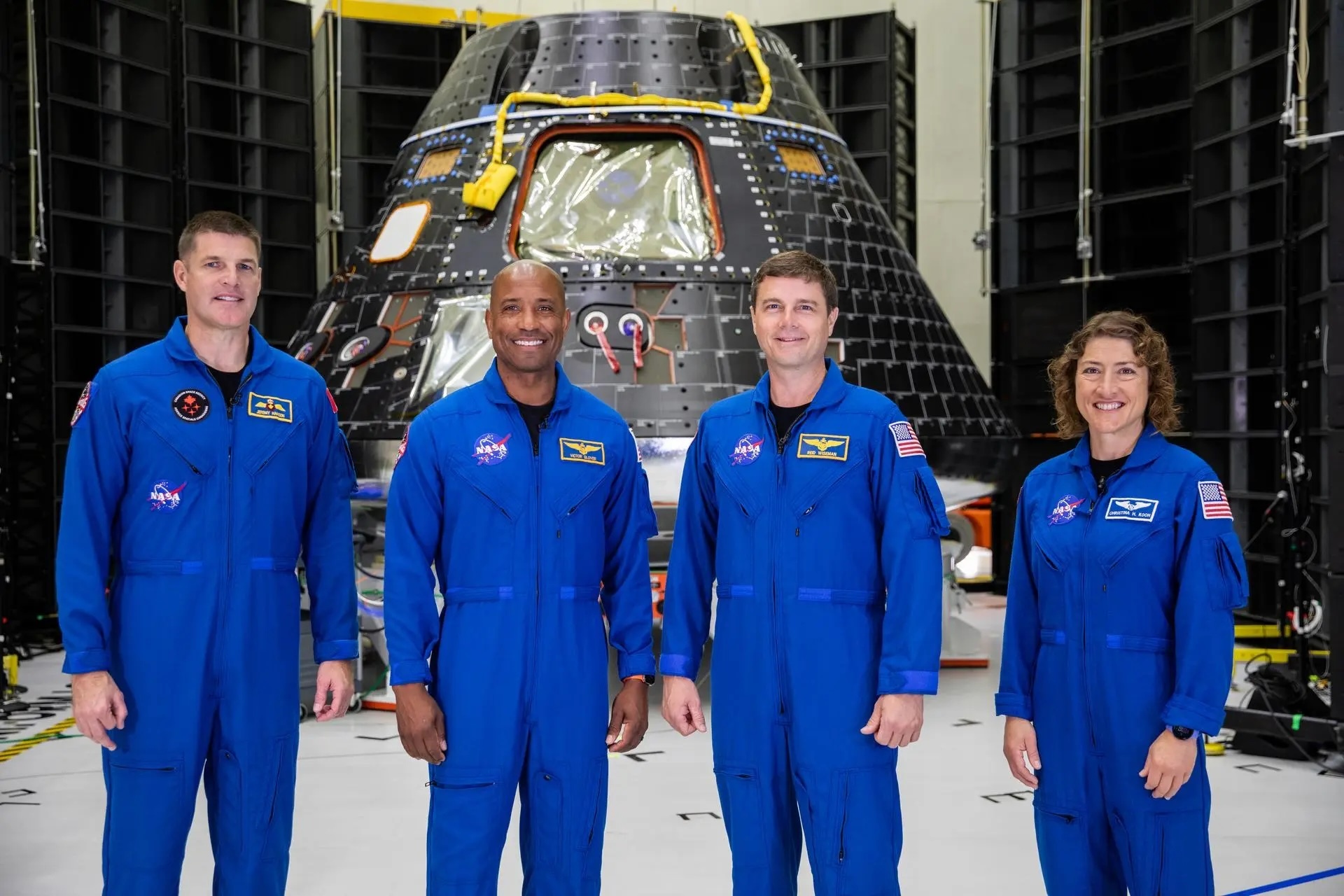
NASA will host a live Twitch event to highlight the ongoing Moon Mascot Challenge, which invites the public to design a zero gravity indicator for the agency’s Artemis II crewed test flight around the Moon. Viewers will have the opportunity to provide real-time input to an artist who will create an example of a zero gravity indicator during the livestream.
Zero gravity indicators are small, plush items carried aboard spacecraft to provide a visual indication of when the crew reaches space.
The event will begin at 3 p.m. EDT on Tuesday, May 13, on the agency’s official Twitch channel:
The contest invites global creators of all ages to submit design ideas for a zero gravity indicator that will fly aboard the agency’s Artemis II test flight, the first crewed mission under NASA’s Artemis campaign.
Up to 25 finalists, including entries from a K-12 student division, will be selected. The Artemis II crew will choose one design that NASA’s Thermal Blanket Lab will fabricate to fly alongside the crew in the Orion spacecraft.
During this Twitch event, NASA experts will discuss the Moon Mascot Challenge while the artist incorporates live audience feedback into a sample design. Although the design example will not be eligible for the contest, it will demonstrate how challenge participants can develop their own zero gravity indicator designs. The example will be shared on the @NASAArtemis social media accounts following the Twitch event.
The Artemis II test flight will take NASA astronauts Reid Wiseman, Victor Glover, and Christina Koch, and CSA (Canadian Space Agency) astronaut Jeremy Hansen on a 10-day journey around the Moon and back. The mission is another step toward missions on the lunar surface to help the agency prepare for future human missions to Mars.
Quelle: NASA
----
Update: 31.05.2025
.
Integrated Testing on Horizon for Artemis II Launch Preparations

Teams responsible for preparing and launching Artemis II at NASA’s Kennedy Space Center in Florida are set to begin a series of integrated tests to get ready for the mission. With the upper stage of the agency’s SLS (Space Launch System) integrated with other elements of the rocket, engineers are set to start the tests to confirm rocket and ground systems are working and communicating as planned.
While similar to the integrated testing campaign conducted for NASA’s uncrewed Artemis I test flight, engineers have added tests ahead of Artemis II to prepare for NASA’s first crewed flight under the Artemis campaign – an approximately 10-day journey by four astronauts around the Moon and back. The mission is another step toward missions on the lunar surface and helping the agency prepare for future astronaut missions to Mars.
Interface Verification Testing
Verifies the functionality and interoperability of interfaces across elements and systems. Teams will conduct this test from the firing room in the Launch Control Center and perform health and status checks of various systems and interfaces between the SLS core stage, the solid rocket boosters, and the ground systems. It will ensure different systems, including core stage engines and booster thrust control, work as planned. Teams also will perform the same series of tests with the interim cryogenic propulsion stage and Orion before conducting a final interface test with all segments.
Program Specific Engineering Test
Teams will conduct separate engineering tests for the core stage, rocket boosters, and upper stage following the interface verification tests for each part of the rocket.
End-to-End Communications Testing
Integrated test of SLS core and upper stages, and Orion command and telemetry radio frequencies with mission control at NASA’s Johnson Space Center in Houston to demonstrate flight controllers’ ability to communicate with the ground systems and infrastructure. This test uses a radio frequency antenna in the Vehicle Assembly Building (VAB), another near the launch pad that will cover the first few minutes of launch, as well as a radio frequency that use the Tracking Data Relay Satellite and the Deep Space Network. Teams will do two versions of this test – one with the ground equipment communicating with a radio and telemetry station for checkouts, and one with all the hardware and equipment communicating with communications infrastructure like it will on launch day.
Countdown Demonstration Test
Teams will conduct a launch day demonstration with the Artemis II astronauts to test launch countdown procedures and make any final necessary adjustments ahead of launch. This test will be divided into two parts. The first will be conducted while SLS and Orion are in the VAB and include the Artemis II crew departing their crew quarters after suiting up at the Neil A. Armstrong Operations and Checkout Building and driving to the VAB where they will enter Orion like they will on launch day and practice getting strapped in. Part two will be completed once the rocket is at the launch pad and will allow the astronauts and Artemis launch team to practice how to use the emergency egress system, which would be used in the event of an unlikely emergency at the launch pad during launch countdown.
Flight Termination System End-to-End Test
Test to ensure the rocket’s flight termination system can be activated in the event of an emergency. For public safety, all rockets are required to have a flight termination system. This test will be divided into two parts inside the VAB. The first will take place ahead of Orion getting stacked atop SLS and the second will occur before the rocket and spacecraft roll out to the launch pad.
Wet Dress Rehearsal
Teams will practice loading cryogenic liquid propellant inside SLS once it’s at the launch pad and run through the launch countdown sequences just prior to engine ignition. The rehearsal will run the Artemis II launch team through operations to load liquid hydrogen and liquid oxygen into the rocket’s tanks, conduct a full launch countdown, demonstrate the ability to recycle the countdown clock, and also drain the tanks to give them an opportunity to practice the timelines and procedures they will use for launch.
Teams will load more than 700,000 gallons of cryogenic, or super cold, propellants into the rocket at the launch pad on the mobile launcher according to the detailed timeline they will use on the actual launch day. They will practice every phase of the countdown, including weather briefings, pre-planned holds in the countdown, conditioning and replenishing the propellants as needed, and validation checks. The Artemis II crew will not participate in the rehearsal.
Quelle: NASA
----
Update: 15.06.2025
.
NASA’s Artemis Science Team Inaugurates Flight Control Room
In early June, NASA’s Artemis II lunar science team ran a mission simulation for the first time in the newly completed Science Evaluation Room (SER) at the agency’s Johnson Space Center in Houston. The team of scientists used the simulation to test how they will work together to lead lunar science activities during Artemis II and future crewed missions to the Moon.
The inaugural simulation marked a major milestone for Artemis science operations. Located in the Christopher C. Kraft Jr. Mission Control Center, the SER supports the mission’s main flight control room for lunar science and planetary observations. Built specifically for Artemis missions with these science priorities in mind, the SER is equipped to support rapid data interpretation, collaborative analysis, real-time decision making, and seamless coordination between the science and operations teams.
“Embedding science directly into the mission operations environment ensures NASA can maximize Artemis discoveries,” said Kelsey Young, NASA’s Artemis II lunar science lead and lead science officer at the agency’s Goddard Space Flight Center in Greenbelt, Maryland. “Seeing the SER and collaborative teams function so beautifully after years of planning and testing makes me even more excited for the science we will accomplish when we return to the Moon.”
Artemis II astronauts will observe the Moon during their 10-day mission around the Moon and back, taking photographs and verbally recording what they see. Their observations will support science objectives and provide data for potential landing sites for future Moon missions.
While the team has run previous simulations, this was the first time they focused on lunar science and planetary observations in the actual rooms they will use during Artemis missions. This gave them the opportunity to test technologies, processes, and the setup of the science support rooms in a real-world scenario. The science team tested processes for prioritizing imaging targets, creating a timeline for observations, and processing incoming data in real time.
The SER’s innovative layout is designed to enhance collaboration and decision making. A large touchscreen table sits front and center in the room as the home base for the scrum team, a small group of scientists focused on making sure specific science objectives are met. Surrounding the scrum in a U-shape is the “trench,” home to experts in data visualization, geography, crew imagery, and timeline management. Behind the trench is a row for science operations support team leadership. First is the SER lead, who manages the activities of the room. Next is the SER Com, the sole person who communicates out of the room to the Science Officer in the Flight Control Room of Mission Control. Additional stations support the Crew Lunar Observations team and IT asset management.
Beyond its technical capabilities, the SER also incorporates visual design elements meant to inspire. A bold blue line near the ceiling symbolizes Earth, while the room’s carpeting – patterned in gray, blue, and red – depicts a two-dimensional projection of the crystalline structure of anorthite, the Moon’s dominant mineral. Together, they give the sensation of standing on the Moon while looking back at Earth.
Through Artemis, NASA will send astronauts to explore the Moon for scientific discovery, economic benefits, and build the foundation for the first crewed missions to Mars.
Quelle: NASA
----
Update: 28.06.2025
.
NASA, Australia Team Up for Artemis II Lunar Laser Communications Test

As NASA prepares for its Artemis II mission, researchers at the agency’s Glenn Research Center in Cleveland are collaborating with The Australian National University (ANU) to prove inventive, cost-saving laser communications technologies in the lunar environment.
Communicating in space usually relies on radio waves, but NASA is exploring laser, or optical, communications, which can send data 10 to 100 times faster to the ground. Instead of radio signals, these systems use infrared light to transmit high-definition video, picture, voice, and science data across vast distances in less time. NASA has proven laser communications during previous technology demonstrations, but Artemis II will be the first crewed mission to attempt using lasers to transmit data from deep space.
To support this effort, researchers working on the agency’s Real Time Optical Receiver (RealTOR) project have developed a cost-effective laser transceiver using commercial-off-the-shelf parts. Earlier this year, NASA Glenn engineers built and tested a replica of the system at the center’s Aerospace Communications Facility, and they are now working with ANU to build a system with the same hardware models to prepare for the university’s Artemis II laser communications demo.
“Australia’s upcoming lunar experiment could showcase the capability, affordability, and reproducibility of the deep space receiver engineered by Glenn,” said Jennifer Downey, co-principal investigator for the RealTOR project at NASA Glenn. “It’s an important step in proving the feasibility of using commercial parts to develop accessible technologies for sustainable exploration beyond Earth.”
During Artemis II, which is scheduled for early 2026, NASA will fly an optical communications system aboard the Orion spacecraft, which will test using lasers to send data across the cosmos. During the mission, NASA will attempt to transmit recorded 4K ultra-high-definition video, flight procedures, pictures, science data, and voice communications from the Moon to Earth.
Nearly 10,000 miles from Cleveland, ANU researchers working at the Mount Stromlo Observatory ground station hope to receive data during Orion’s journey around the Moon using the Glenn-developed transceiver model. This ground station will serve as a test location for the new transceiver design and will not be one of the mission’s primary ground stations. If the test is successful, it will prove that commercial parts can be used to build affordable, scalable space communication systems for future missions to the Moon, Mars, and beyond.
“Engaging with The Australian National University to expand commercial laser communications offerings across the world will further demonstrate how this advanced satellite communications capability is ready to support the agency’s networks and missions as we set our sights on deep space exploration,” said Marie Piasecki, technology portfolio manager for NASA’s Space Communications and Navigation (SCaN) Program.
As NASA continues to investigate the feasibility of using commercial parts to engineer ground stations, Glenn researchers will continue to provide critical support in preparation for Australia’s demonstration.
Strong global partnerships advance technology breakthroughs and are instrumental as NASA expands humanity’s reach from the Moon to Mars, while fueling innovations that improve life on Earth. Through Artemis, NASA will send astronauts to explore the Moon for scientific discovery, economic benefits, and build the foundation for the first crewed missions to Mars.
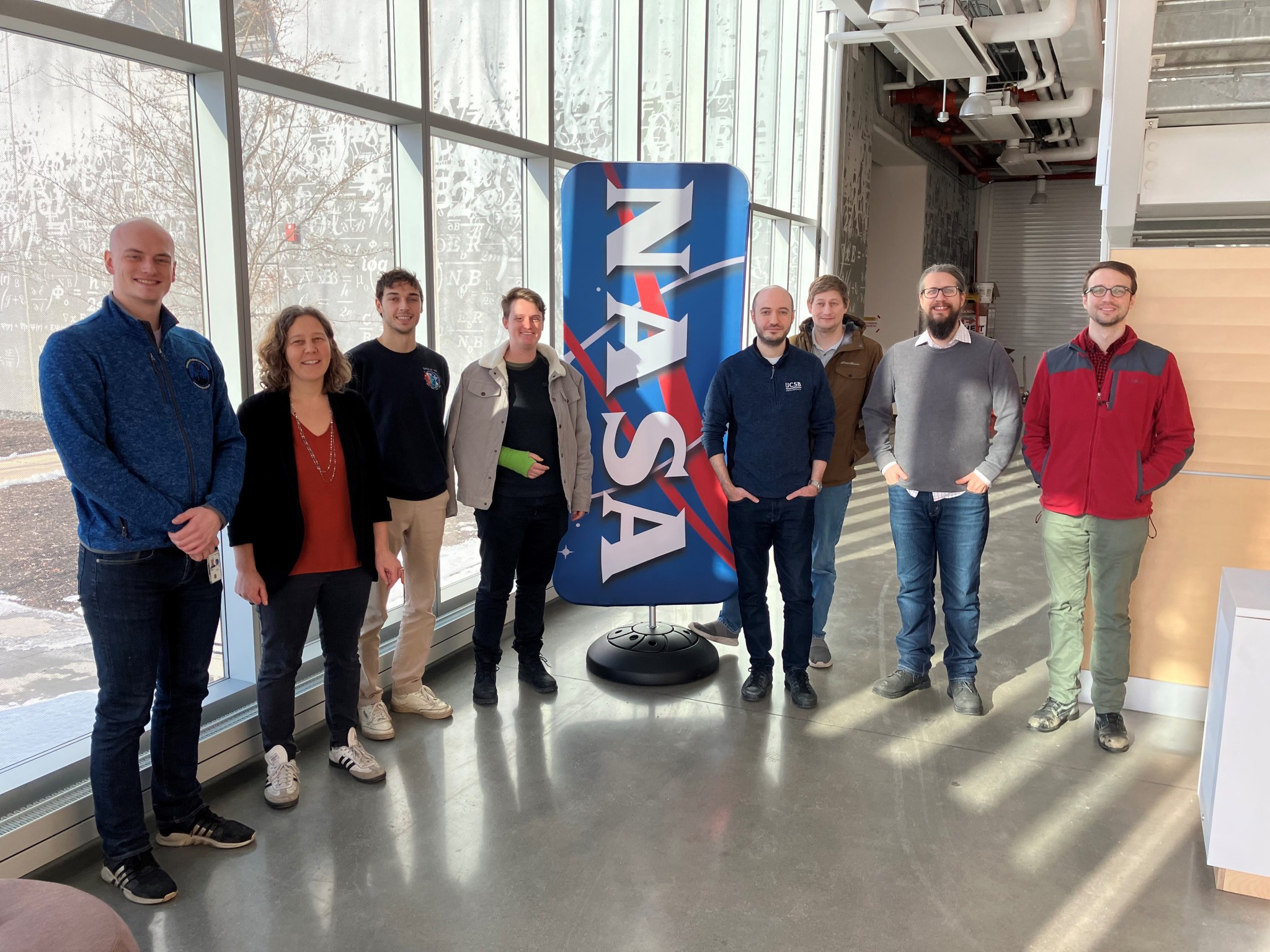
The RealTOR project is one aspect of the optical communications portfolio within NASA’s SCaN Program, which includes demonstrations and in-space experiment platforms to test the viability of infrared light for sending data to and from space. These include the LCOT (Low-Cost Optical Terminal) project, the Laser Communications Relay Demonstration, and more. NASA Glenn manages the project under the direction of agency’s SCaN Program at NASA Headquarters in Washington.
The Australian National University’s demonstration is supported by the Australian Space Agency Moon to Mars Demonstrator Mission Grant program, which has facilitated operational capability for the Australian Deep Space Optical Ground Station Network.
Quelle: NASA
----
Update: 4.08.2025
.
Artemis II astronauts discuss mission status ahead of in-capsule training
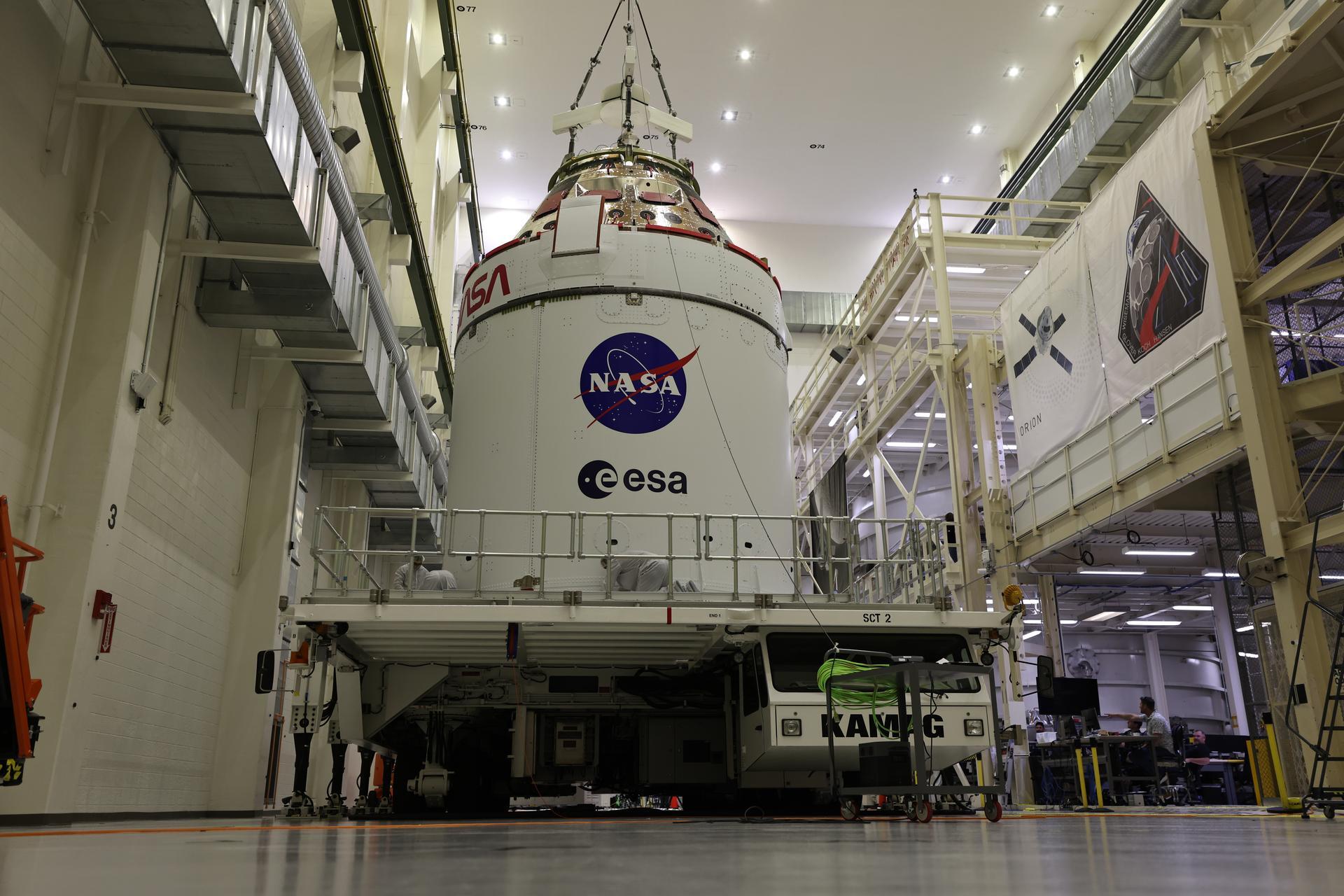
Scheduled to launch in February 2026, the Artemis II Orion capsule and Space Launch System (SLS) rocket are currently at Kennedy Space Center in Florida for final integration and stacking. The Artemis II astronauts — comprised of NASA astronauts Reid Wiseman, Victor Glover, Christina Koch, and Canadian Space Agency astronaut Jeremy Hansen — recently spoke with the media at the Kennedy Space Center days before the Crew-11 launch about the struggles, the successes, and the emotional weight of being at the forefront of the future of human space exploration.
Shortly after their meeting with the media, the four astronauts suited up and began training in their Orion capsule that will take them around the Moon. The Artemis II Orion is currently located inside the Multi-Payload Processing Facility (MPPF) in Florida, where it awaits its stacking with SLS in the Vehicle Assembly Building (VAB).
“When you’re in your launch and entry suits and you’re with the crew you’re going to be on the pad with, that is absolutely phenomenal,” Glover noted. “Every single day feels more and more real, like there’s more and more chances to do the actual mission with the actual folks we’re going to be with, and we just couldn’t be more excited.”
One of the factors that has led to the Artemis II mission delays is Orion’s heat shield. Following the first flight of Orion aboard the Space Launch System (SLS) on Artemis I in November 2022, serious concerns were raised about the spacecraft’s headshield when the ablative material covering the base of the capsule, known as AVCOAT, was extremely charred with chunks missing.
For Artemis II, Orion will not use a “skip” reentry method, which sees the capsule skim the atmosphere before committing to a full reentry. Instead, Wiseman explained that Orion will aim for a lofted profile, although the exact trajectory is still being finalized.
“I think all of that points in the direction of goodness, and I think if you, as a human being, were about to board this rocket and had sat in the meetings that we’ve sat in, listened to the experts, and gone through the data, you would have the same cover that we do,” Wiseman said.
Some online have raised concerns about the heat shield, including former NASA astronaut Charlie Camarda, who flew on the return-to-flight mission following the loss of the Space Shuttle Columbia on STS-107. The STS-107 mission suffered damage on the leading edge of the Shuttle’s wing following a foam strike on the heat shield during ascent.
Wiseman went out of his way to acknowledge comments similar to these.
“A lot of those are outsiders… haven’t been in these meetings from day one and met the team and looked them in the eye and shook their hands at the ends of these meetings,” he noted. “But the other thing is, I don’t want to discount the things that they’ve said. Anytime you talk about fire, anytime you talk about entry and heat shields, [anytime] you talk about parachutes — these are high-risk things that don’t have fault tolerance built in. They have to work, and so I appreciate all the nudging, poking, and prodding they’ve caused. They have made us sharpen our pencils and put more due diligence and more vigilance into that process.”
Outside of the heat shield, there are several other items the crew is keeping an eye on as their flight approaches.
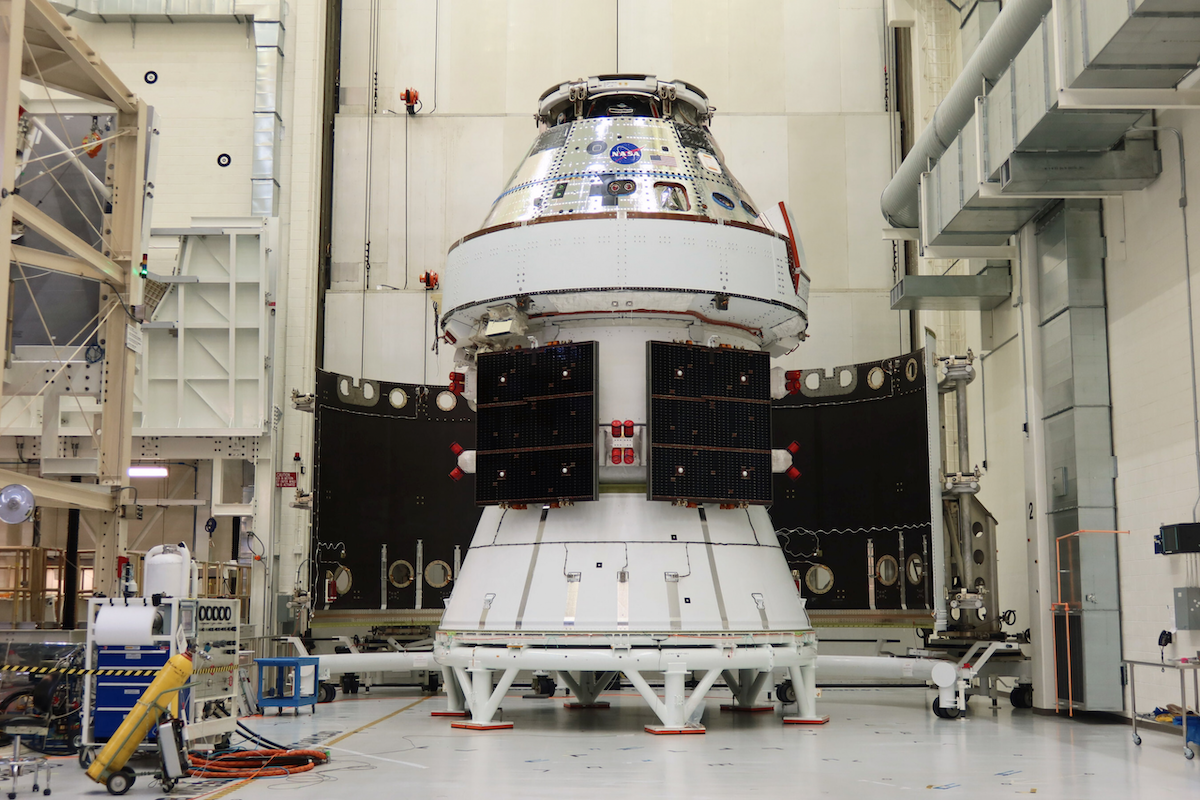
“We talk about that exact topic at every high-level meeting we have,” he said. “Where are our numbers? Are we losing critical folks? Are we extending critical folks? So I just think the open, honest communication is what is super important.”
While there is much focus on the technical side of the flight, the crew continues to train for the scientific aspects of their mission. The four astronauts are regularly working with scientists, geologists, and other professionals to make the most of their unique journey around the Moon.
“We may see a part of the Moon illuminated by our Sun that human eyes have not seen, and so there’s a desire to see the colors and the texture and the context and to be able to add to this scientific encyclopedia of what is known about the Moon,” Glover said. “I mean, we have imagery, but the human eye can see things that cameras can’t see, right? The Lunar Reconnaissance Orbiter has given us a ton of data to help start this investigation, but we may be able to move it forward, even if it’s just one inch. And the fact that those teams — the lunar science teams all over the world — are counting on us to provide that… I guess the weight of that idea really hit me.”
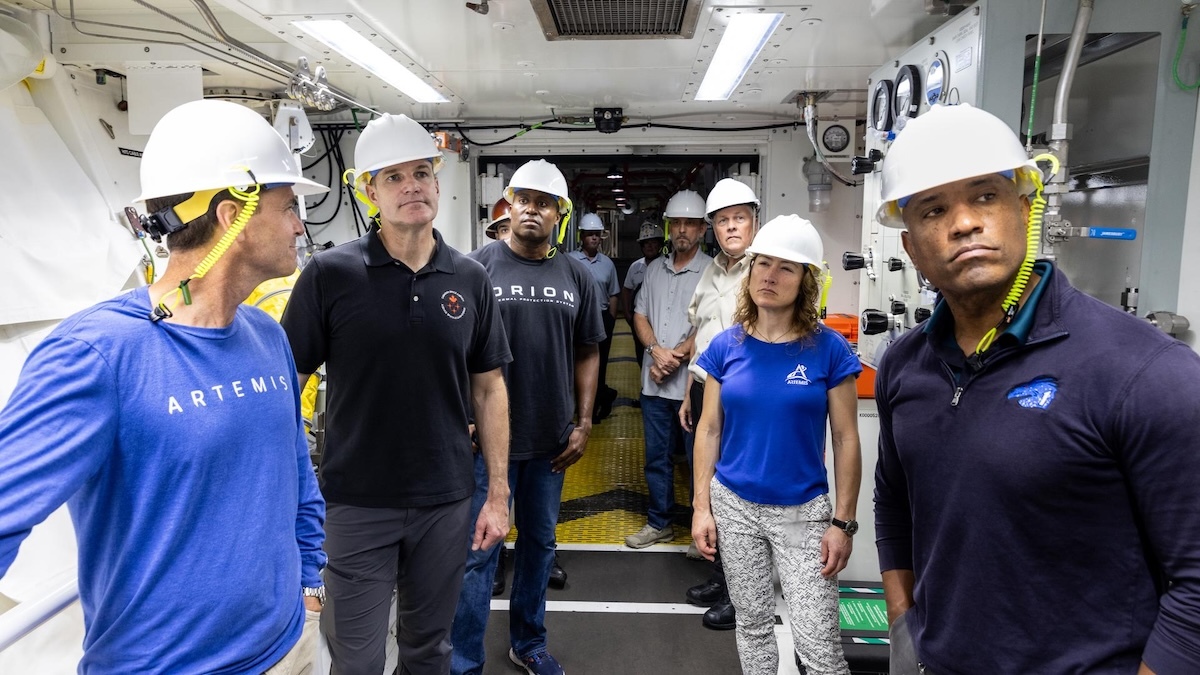
The crew is continuing to run simulations twice a week. The astronauts will soon participate in real-time mission training with actual flight software as their SLS rocket awaits the stacking of its Orion capsule inside the VAB. Orion is expected to be stacked within the coming months.
Through all of the training, troubleshooting, and changes, however, there is one thing the crew has been able to rely on constantly — laughter.
“We have been together long enough that we’ve kind of done the forming, storming, and norming part and we are getting to that point where we… are really hitting on all cylinders and just look at each other and know ‘hey, this person’s in need or this person’s in a great mood or this person’s got a great idea,’” Wiseman said.
Quelle: NSF
+++
What's behind NASA's Artemis II patch? The flip side is coming
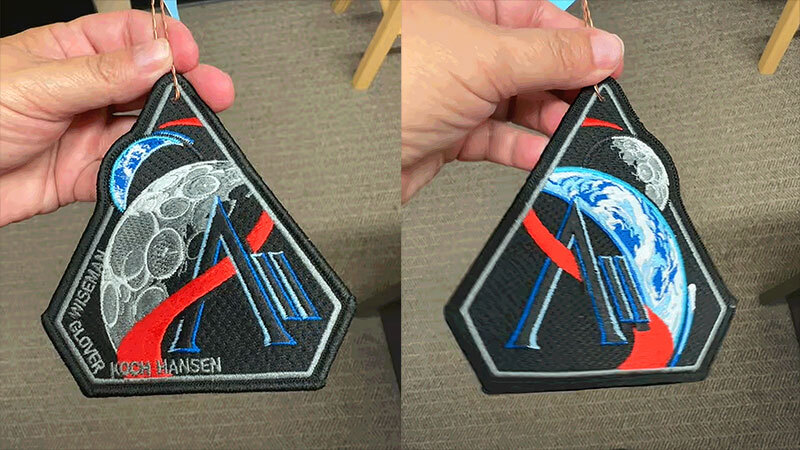
As it turns out, there is a flip side to the Artemis II mission patch.
Debuted by the crew in April, the triangular badge is the first insignia to represent moon-bound astronauts in more than 50 years. It depicts Earth rising over the moon, while designating the mission "AII" as it is both the second flight of NASA's Artemis program and it "seeks to explore for all and by all."
There is more behind the design, though ... literally.
"When the Astronaut Office reached out to start this new [patch] program, they said, 'Hey, we have an idea for something that we would like to do, but we just don't know if it's even possible,'" said Susan Morris, a sales representative at A-B Emblem, in an interview. "They sent over the art for what is now the official patch — and then they sent the other side."
Based in Weaverville, North Carolina, A-B Emblem has been NASA's source for embroidered patches since 1960. The last (or rather, most recent) astronauts to walk on the moon wore A-B Emblem patches when they arrived back on Earth (in-flight, all of the Apollo crews' insignia were silkscreened on fire-proof glass cloth).
Five decades and hundreds of designs later and A-B Emblem has never made a two-sided mission patch.
The Astronaut Office's idea was to flip the scene on the front of the patch and embroider it on the back. The reverse would show Earth in the foreground with the moon rising behind it, representing the second half of the 10-day-long Artemis II mission when the astronauts — commander Reid Wiseman, pilot Victor Glover and mission specialists Christina Koch and Jeremy Hansen — would be heading home after looping around the moon aboard their Orion spacecraft.
"We haven't done a crew patch that way before. We've done ornaments. We've done key fobs using the same idea. But never a double-sided patch," said Morris.
And they still haven't. The official Artemis II patch only has a design on one side and A-B had to finalize their embroidered version of the official version before they could even think about producing a collector's edition. Among the changes they had to make in response to the crew's feedback was how the craters on the moon appeared; the thread used to form the red trajectory; the embroidery of the trail over Earth; and partially eclipsing Wiseman's name by the moon, the latter a nod to the crew going around the rocky orb.
A-B Emblem began sales of the patch to the public on July 20, the anniversary of the first moon landing by the Apollo 11 astronauts in 1969. The company also fulfilled the Astronaut Office's initial order, though they do not expect to make the patches to be worn by the crew for the mission until closer to the launch.
"But we are still doing the double-side patch," Morris revealed. "It's not the official patch, but it is being made for collectors and the crew. Wiseman wanted to give it a shot as something for them to have and to give out."
Morris expects the two-sided patch to be available to order in a few weeks. It is in production now. It is difficult, Morris said, to predict which will sell better. the two-sided collectible is unique but will cost more than the $10 official patch.
Either way, A-B Emblem is ready to make however many patches are needed now, at the time of the early (no later tan April) 2026 mission and into the future.
"We're really excited about it," said Morris."And not just this mission but the whole Artemis program and everything it will achieve."
Quelle: CS
----
Update: 6.08.2025
.
NASA’s Artemis Crew Trains in Moonbound Orion Ahead of Mission
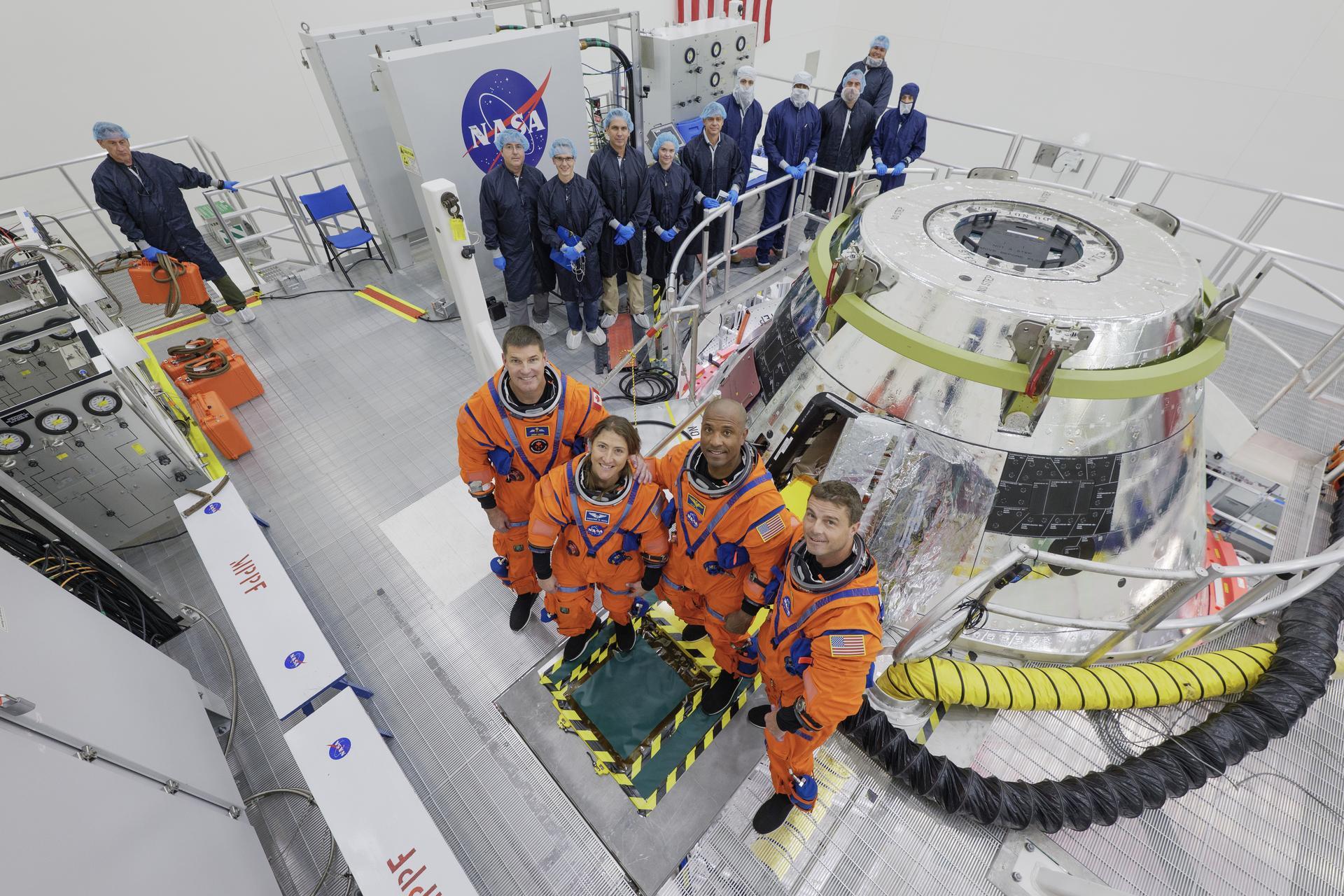
The first crew slated to fly in NASA’s Orion spacecraft during the Artemis II mission around the Moon early next year entered their spacecraft for a multi-day training at the agency’s Kennedy Space Center in Florida. Crew donned their spacesuits July 31 and boarded Orion to train and experience some of the conditions they can expect on their mission.
NASA astronauts Reid Wiseman, Victor Glover, and Christina Koch, and CSA (Canadian Space Agency) astronaut Jeremy Hansen participated in a suited crew test and crew equipment interface test, performing launch day and simulated orbital activities inside Orion.
Every milestone in the Artemis campaign brings us closer to landing Americans back on the Moon and pushing onward to Mars.

SEAN DUFFY
acting NASA Administrator
“In about six months, Artemis II astronauts will journey around the Moon for the first time in 53 years,” Duffy said. “America rallied behind Apollo because it represented the best of us – now it’s Artemis’ turn. They’re not just carrying a flag – they’re carrying the pride, power, and promise of the United States of America.”
With Orion powered on, the suited crew test was a close representation of what the crew can expect on launch day. The crew began the day by suiting up inside the spaceport’s Multi-Operation Support Building, donning their Orion crew survival system spacesuits, boarding the zero-emission crew transportation vehicles, and entering Orion, which is currently inside the Multi-Payload Processing Facility, where engineers have loaded its propellants over the course of several weeks.
Once in Orion, the crew performed several launch day activities, including communications checkouts and suit leak checks. For the first time, the crew was connected to the spacecraft and its communications and life control systems, and all umbilicals were connected while the spacecraft operated on full power.
Teams simulated several different ground and flight conditions to give the crew more experience managing them in real time. Some of the activities simulated scenarios where the crew was challenged to address potential issues while in space such as leaks and failure of the air revitalization system fan, which is needed to provide oxygen and remove carbon dioxide from the cabin. Getting this hands-on experience and learning how to act fast to overcome potential challenges during flight helps ensure the crew is ready for any scenario.
The test provides astronauts the ability to train on the actual hardware they will use during flight, allowing them and support teams the opportunity to familiarize themselves with the equipment in configurations very close to what will be experienced during flight. It also allows teams to verify compatibility between the equipment and systems with flight controller procedures, so they can make any final adjustments ahead of launch.
This test brings together the Artemis II crew and the Orion spacecraft that will carry them to the Moon and back.

SHAWN QUINN
NASA's Exploration Ground Systems Program manager
“It signifies the immense amount of work that our operations and development teams put into making sure we are ready for launch.” Quinn said. “They have meticulously planned each operation, timing them to perfection – and now we put it to the test.”
Exchanging their spacesuits for cleanroom garments for the crew equipment interface test, and with the spacecraft powered off, the crew also performed many of the activities they are likely to do in flight and conducted additional equipment checks. The crew practiced removing and stowing the foot pans on the pilot and commander seats, which will allow them to have more open space in the cabin after launch. They also accessed the stowage lockers and familiarized themselves with cameras, associated cables and mounts, and the environmental control and life support system hardware.
In addition to getting practical experience with the actual hardware they’ll use in space, they also prepared for life in deep space, reviewing cabin labels, sleep arrangements and checklists, and the hygiene bay.
Through the Artemis campaign, NASA will send astronauts to explore the Moon for scientific discovery, economic benefits, and to build the foundation for the first crewed missions to Mars – for the benefit of all.
Quelle: NASA
----
Update: 13.08.2025
.
NASA Invites Media to View Artemis II Orion Stage Adapter at Marshall

Media are invited to NASA’s Marshall Space Flight Center in Huntsville, Alabama, at 2 p.m. CDT Thursday, Aug. 14 to view the final piece of space flight hardware for the agency’s SLS (Space Launch System) rocket for the Artemis II mission before it is delivered to NASA’s Kennedy Space Center in Florida. All other elements of the SLS rocket for Artemis II are stacked on mobile launcher 1 in the Vehicle Assembly Building at Kennedy. Artemis II, NASA’s first mission with crew aboard the SLS rocket and Orion spacecraft, is currently scheduled for a 10-day trip around the Moon no later than April 2026.
The Orion stage adapter, built by NASA Marshall, connects the SLS rocket’s interim cryogenic propulsion stage to NASA’s Orion spacecraft. The small ring structure is the topmost portion of the SLS rocket. The adapter will also carry small payloads, called CubeSats, to deep space.
Media will have the opportunity to capture images and video and speak to subject matter experts. Along with viewing the adapter for Artemis II, media will be able to see the Orion stage adapter for the Artemis III mission, the first lunar landing at the Moon’s South Pole.
This event is open to U.S. media, who must confirm their attendance by 12 p.m. CDT Wednesday, Aug. 13, with Jonathan Deal in Marshall’s Office of Communications at jonathan.e.deal@nasa.gov. Media must also report by 1:30 p.m. Thursday, Aug.14 to the Redstone Arsenal Joint Visitor Control Center Gate 9 parking lot, located at the Interstate 565 interchange at Research Park Boulevard, to be escorted to the event.
Through Artemis, NASA will send astronauts to explore the Moon for scientific discovery, economic benefits, and build the foundation for the first crewed missions to Mars.
Quelle: NASA

